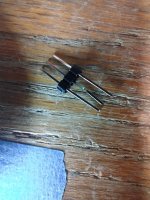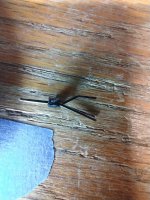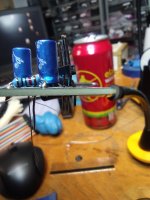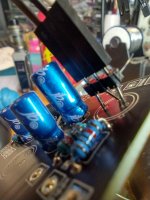Yeah. I know. It's called a bread board.
Typical engineer trying to find a solution to a problem no one complained about, I had a stroke or a stroke of genius. Not sure which.
Basically, grab some long male on male headers and some female on female Dupont wires.
Snip a 3 pole piece of header off and bend as shown. Basically the outer two legs bend back 10-15° and kink the middle one where they all pinch once inserted. Should be enough contact to do the thing to the thing.
Picture, thousand words, stuff...




Jam your germaniums in the other end, or use male to female DuPont's and take it to the bread board where it belongs.
I would recommend attaching your Dupont wires before inserting into the pcb.
Do what you will with it. Happy New Year everyone.
And yeah. My bench looks gross zoomed in. That particular spot is worse from the isopropyl. It's an old 100+lb commercial door. I can put a V8 on this bench and it won't flinch. I hide under it when storms come.
Enough talk about benches and holes. Go make something cool.
Typical engineer trying to find a solution to a problem no one complained about, I had a stroke or a stroke of genius. Not sure which.
Basically, grab some long male on male headers and some female on female Dupont wires.
Snip a 3 pole piece of header off and bend as shown. Basically the outer two legs bend back 10-15° and kink the middle one where they all pinch once inserted. Should be enough contact to do the thing to the thing.
Picture, thousand words, stuff...




Jam your germaniums in the other end, or use male to female DuPont's and take it to the bread board where it belongs.
I would recommend attaching your Dupont wires before inserting into the pcb.
Do what you will with it. Happy New Year everyone.
And yeah. My bench looks gross zoomed in. That particular spot is worse from the isopropyl. It's an old 100+lb commercial door. I can put a V8 on this bench and it won't flinch. I hide under it when storms come.
Enough talk about benches and holes. Go make something cool.

